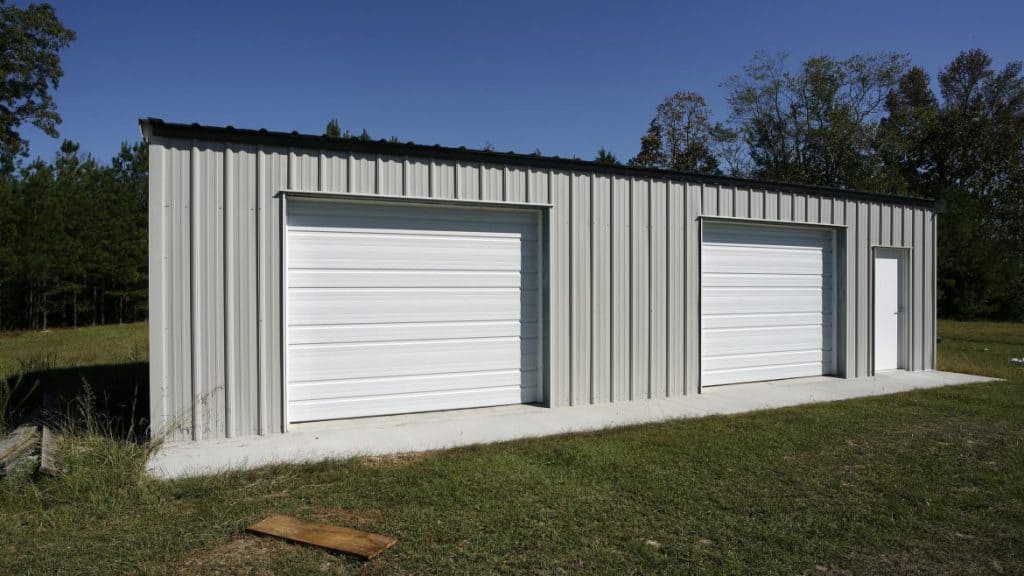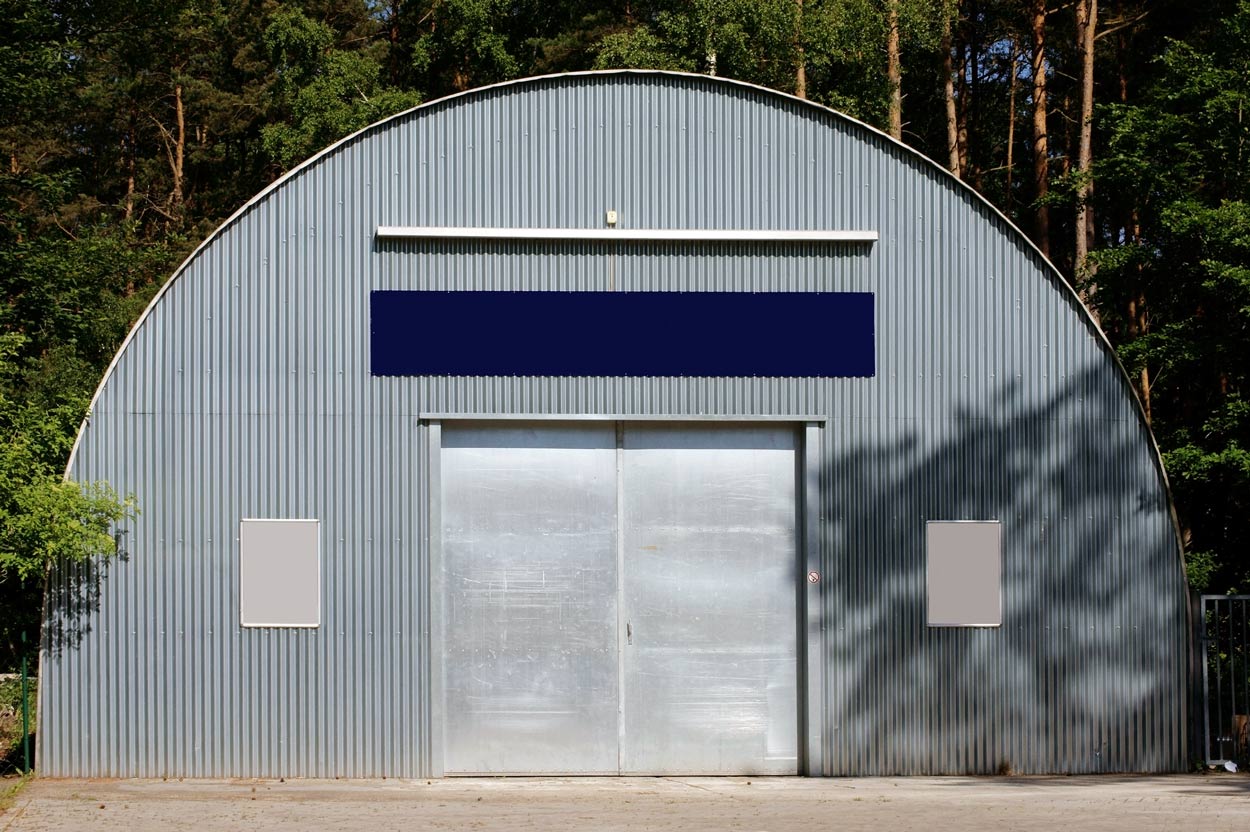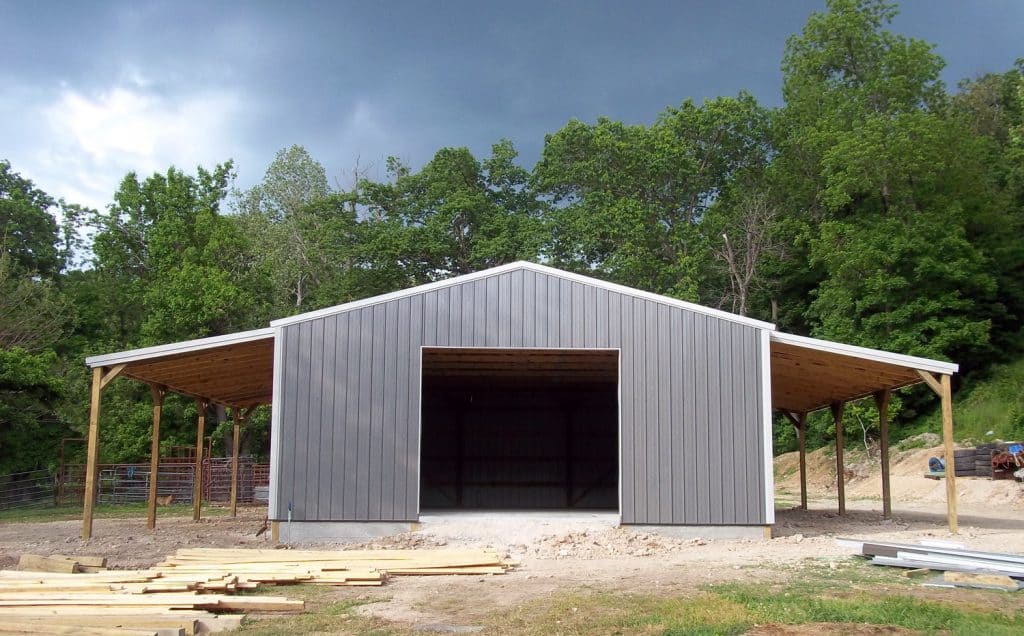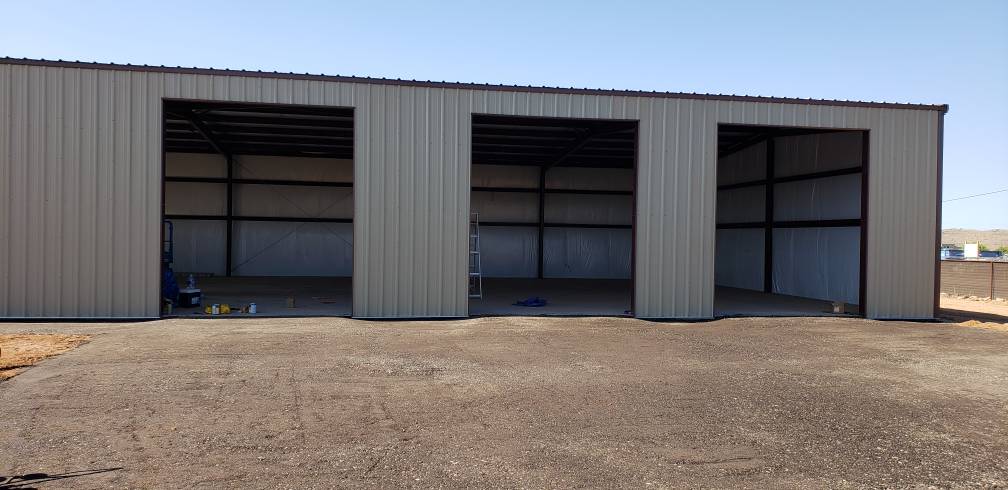One large category of metal buildings you can construct quickly and affordably for a wide range of uses is utility buildings.
COMPARE PRICES & SAVE UP TO 33%
The phrase “utility building” is quite broad. In fact, there really isn’t a formal definition for it. Instead of attempting to define “utility building,” we usually just provide examples that we see most frequently from our metal kits.
Let’s check out some of the most common types of utility buildings.
1. Storage sheds
Utility storage buildings are among the most prevalent utility structures in existence. This is usually a small structure that features a standard-size door and (generally) an A-frame shape to the roof.
Sometimes, storage sheds come in larger configurations, and might even include a garage door (common with garden sheds).
Although a storage shed can be made out of any building material, metal is a popular one because it is affordable, strong, and resists weather, fire and pests.
You can store anything you want in a backyard shed. Commonly, people use them to store their lawn and garden tools and supplies, as well as equipment used for sports and backyard games.
Just keep in mind that even though a utility shed shelters its contents, they are still a bit more exposed than they would be in your home, as most utility sheds are not climate-controlled.
2. Portable buildings

Sometimes, the broad category of utility buildings may also contain another broad sub-category: portable buildings. Here are some common types of portable buildings:
- Offices
- Backyard sheds (for personal use, not just storage)
- Studios
- Temporary emergency response buildings
- School additions
Portable buildings are typically (though not always) on trailers.
3. Garages
Another common type of utility building is a garage. This is a structure that is designed to accommodate one or more vehicles, protecting them from the elements, and reducing the chances that they are stolen or vandalized.
You can build a garage to store cars, trucks, vans, RVs, boats, and more.
To make it possible to move the vehicles in and out, a garage needs to feature roll-up garage doors.
A lot of people also work in their garages, whether on their vehicles or on other projects. That brings us to the below.
4. Workshops

Some utility buildings are constructed to serve as workshops. While garage-workshop buildings are popular, so are standalone workshops.
You can work on anything in a utility workshop, whether it is hardware projects, woodworking, ceramics, or anything else you can picture.
5. Public utility buildings
Finally, it is worth mentioning that utility buildings include public utility buildings as well. These are structures that house equipment or office facilities tied to public utilities.
If you are reading this list while thinking of building something for your backyard as a private citizen, naturally, this is not something you are looking into. Still, it is useful to know it falls into the same broad category.
Why Choose Metal for a Utility Building?
Utility buildings can be constructed from a wide range of materials. But metal is one of the most popular options. Here are some reasons why.
- Durability: Metal makes an excellent material for a utility building in part because it is strong. Steel is especially sturdy.
- Weather-resistance: A metal building can hold up to strong winds where other materials might buckle, making it a good option in harsh climates.
- Fire-resistance: A utility building not only needs to shield its contents from weather, but from other elements as well. While metal can get to be very hot, it does not combust like wood does, making it a fire-resistant choice for constructing a utility building.
- Pest-resistance: Backyard utility sheds that are poorly constructed out of pest-susceptible materials can become easy targets for rodents and insects. But a metal utility building will generally do a great job at keeping these pests out. While pests can chew through wood, they have a much harder time getting through metal.
- Low-maintenance: You do not need to do as much work to maintain a metal utility building as you would a utility building made out of wood.
- Fast and economical to build: You can order an affordable metal building kit with prefab components made in a factory using precise manufacturing techniques. Final assembly on your site should be rapid and easy with minimal personnel and equipment.
- Longevity: Metal utility buildings can outlast utility buildings that are made out of weaker, less durable materials, providing many decades of use. They can be more eco-friendly as well. They can be made out of recycled and recyclable materials, and they require replacement less frequently.
Customizing a Utility Building
Now let’s talk about ways you can customize a utility building.
- Dimensions: It all starts with determining what size of utility building you need. Be sure to consider not just the length and width, but also the height—particularly if you are constructing a utility building that will serve as a garage for a tall vehicle like an RV.
- Materials: You can build a utility building out of a number of different metals. We recommend steel, as it is particularly robust.
- Doors and windows: Something else you can decide on when you are designing a utility building is how many doors to include, as well as their sizes, types and placements. You might also decide to include windows (or not).
- Finishing: You can decide on interior and exterior finishes to customize your utility building.
- Outlets: If you plan to use electrical equipment in the utility building, you may wish to have one or more outlets installed. Think about where you want to put the equipment, and how many wires you will need to run.
- Additional features: You may wish to have lighting built into your utility building. Some utility buildings may incorporate built-in furnishings, kitchen areas, bathrooms, HVAC, or other features that increase comfort and functionality.
Financing Your Utility Structure Project
We have discussed the types of utility buildings in-depth, as well as features for customizing a utility building. But how do you finance one?
Most people will not be able to afford to buy a utility building outright, whether it is for private or commercial use. You will likely need to apply for financing for the utility building.
- Construction loan: One of the most common options is to apply for a construction loan. You can do this through a bank, mortgage lender, mortgage broker, etc. Not all of them specialize in construction loans. So, you will need to find one that does. If you are not sure where to begin, ask your metal building manufacturer. Sometimes they may have recommendations, or even established relationships with certain lenders.
- Rent to own: Some people may not be sure if they need a utility building for the long term or not. If this is your situation, it may make sense to look for a rent-to-own option. You pay rent each month on the utility building. If you eventually no longer need the building, you can then just walk away. But if you end up renting it for long enough, you will eventually own it.
- Leasing: If you are sure that you only need the utility building temporarily, you can just lease it.
- Manufacturer financing: You may notice if you are looking for a construction loan that it can sometimes be a challenge to find companies that understand how to finance metal utility buildings. That can get frustrating. That is why quite a few metal building manufacturers offer utility building financing options directly.
Get a Metal Utility Building Kit
If you want to build a utility storage building, garage, or other structure, you can do it quickly and easily with a metal building kit. Complete our easy form below to request a custom quote from one of our recommended metal building companies in your state.



